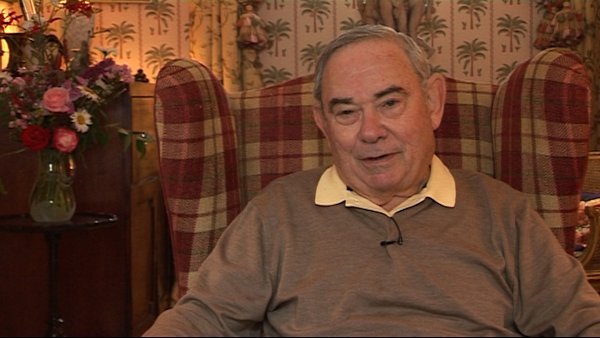NEXT STORY

The DNA end replication problem
RELATED STORIES

NEXT STORY

The DNA end replication problem
RELATED STORIES



Woody discovered, through a technology that I'll describe very briefly, but I think it will be clearly understood how this experiment was done. Cells, of course, have nuclei. They have a central, round shaped, organelle in which is located all of the hereditary material, namely the DNA and the synthesis of proteins, or at least the language of DNA being translated into signals that provide for the formation of proteins, mostly extra-nuclearly. So our first approach, Woody and I had several discussions on how to do this, and he found that there was a technology developing then where you could expose cells to a chemical, whose name is Cytochalasin B. What the chemical did was to interfere with the mitotic behaviour of cells, that is, their ability to divide. What would happen in the presence of low concentrations of this chemical is that the nucleus of the cell would divide, but the cell itself would not, so that you ended up with nuclei dividing within the cell, because that's where the chromosomes are, and you'd end up with a cell with many nuclei. If you raised the concentration of Cytochalasin B the original single nucleus in a cell exposed in this way, to that chemical, would result in the single nucleus being expelled – physically expelled – from the cell, but still tethered to the remaining cell, which we call a cytoplasm, and that tether could be broken by centrifugation. That is, high speed circulatory movement in a gadget called a centrifuge. Now you end up with a bunch of nucleoplasts, namely cells without nuclei, and nucleoplasts, namely free nuclei. They are, for the most part, all viable... still viable.
Now you can do an interesting experiment. You can take the nucleoplasts from a young cell – that is a cell, let's say, at the 10th or 15th population doubling – and put it into the cytoplast from an old cell – at the 40th or 50th doubling – and you can also do the reverse of that plan, and then determine what these combinations of cells and different nuclei, old and young, you determine the number of population doublings that they're capable of. Now, what you learn is that the number of population doublings that they're capable of is a function of the population doubling level of the nucleus that was inserted into them. If you insert an old nucleus into a young cytoplasm, the old nucleus prevails in respect to determining the number of population doublings, and the reverse. Well, that clearly showed that the replicometer – the counting mechanism – was in the nucleus and not in the cytoplasm. Other experiments done with another of my post-doctoral students, Audrey Muggleton-Harris, also demonstrated more or less the same thing. These experiments were conducted at approximately the same time, but I believe Woody's experiment was a bit more definitive, and indeed we published this. We were confident of the results. It was, frankly, no surprise that the replicometer was in the nucleus because, after all, most of the governance of a cell's behaviour is a function of nuclear events. Of course we knew nothing more than the location of this counting mechanism.
Leonard Hayflick (b. 1928), the recipient of several research prizes and awards, including the 1991 Sandoz Prize for Gerontological Research, is known for his research in cell biology, virus vaccine development, and mycoplasmology. He also has studied the ageing process for more than thirty years. Hayflick is known for discovering that human cells divide for a limited number of times in vitro (refuting the contention by Alexis Carrel that normal body cells are immortal), which is known as the Hayflick limit, as well as developing the first normal human diploid cell strains for studies on human ageing and for research use throughout the world. He also made the first oral polio vaccine produced in a continuously propogated cell strain - work which contributed to significant virus vaccine development.
Title: Woodring Wright's experiment with the cell nucleus
Listeners: Christopher Sykes
Christopher Sykes is a London-based television producer and director who has made a number of documentary films for BBC TV, Channel 4 and PBS.
Tags: DNA, proteins, cytochalasin B, mytosis, cell division, nucleus, cytoplasm, centrifuge, nucleoplast, population doubling, counting mechanism, Woodring Wright
Duration: 4 minutes, 34 seconds
Date story recorded: July 2011
Date story went live: 08 August 2012